Cheesecake may be one of the world’s most beloved desserts, but there’s so much more to it than the classic New York slice. Across continents and cultures, this creamy indulgence takes on countless forms—from the fluffy, jiggly Japanese style to the caramelized, crustless Basque version. Some are baked, others chilled, and a few even skip the sugar entirely for savory surprises. In this guide, we’re serving up 17 unique types of cheesecake from around the globe. Whether you’re a die-hard dessert lover or a curious foodie, these styles will open your eyes to just how diverse cheesecake can be.
1. New York-Style Cheesecake
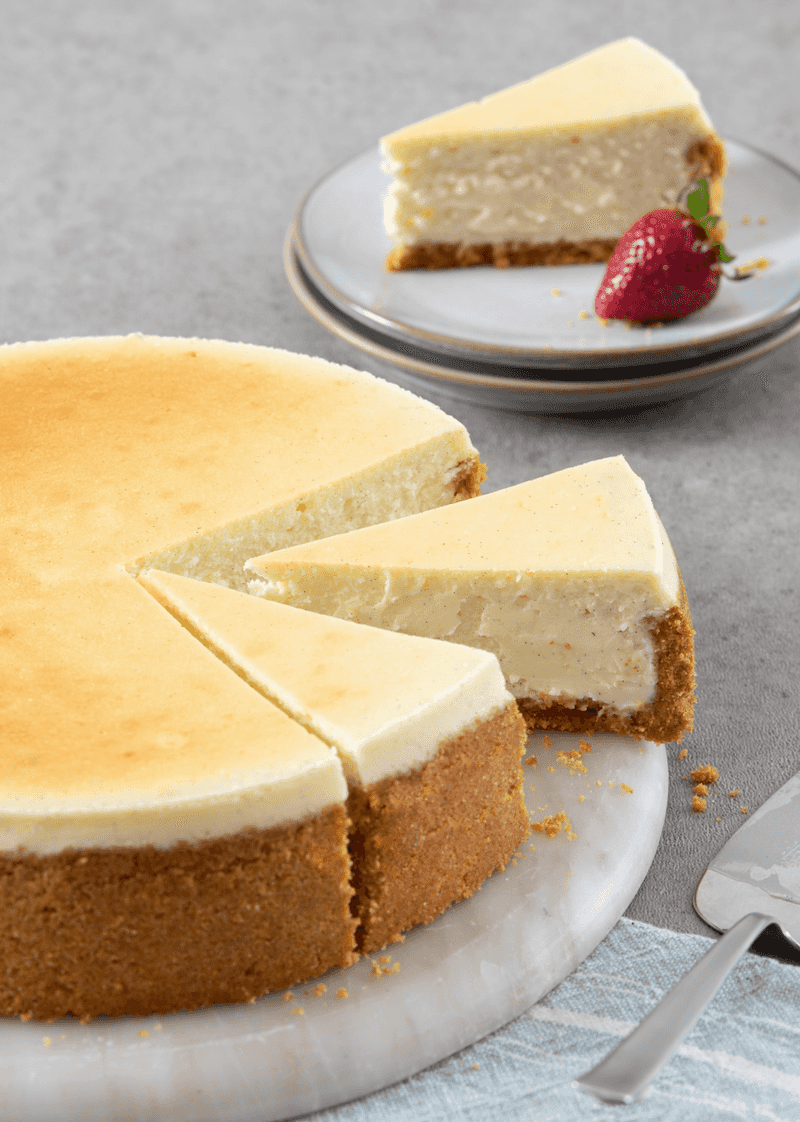
The heavyweight champion of the cheesecake world stands tall and proud on dessert menus across America. Made with cream cheese, eggs, and sugar, this dense treat delivers a satisfying richness that melts in your mouth.
The signature graham cracker crust provides the perfect crunchy foundation. Many bakers add a touch of lemon zest to cut through the creaminess, creating a balanced flavor profile.
Traditionally served plain with no toppings, purists insist this allows you to appreciate the cheesecake’s velvety texture. However, a drizzle of strawberry sauce or fresh berries makes for a classic pairing that’s hard to resist.
2. No-Bake Cheesecake
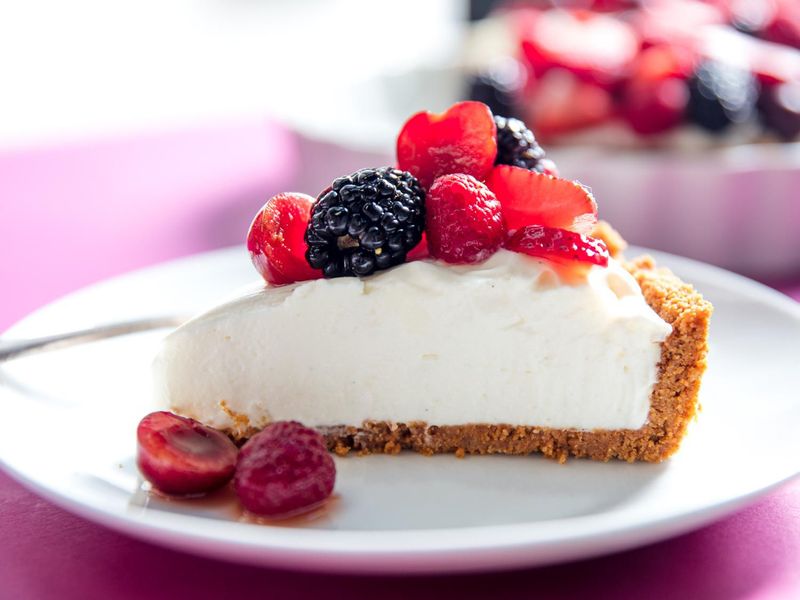
Summer’s favorite dessert doesn’t require turning on the oven! This refreshing treat sets up in the refrigerator, making it perfect for hot days when baking feels like torture.
The secret lies in its stabilizers – gelatin or whipped cream provide structure while keeping the texture cloud-like. A buttery graham cracker or cookie crust forms the foundation for this chilled delight. Fresh fruit toppings shine especially bright on no-bake varieties.
The lighter profile allows berries, mangoes, or passion fruit to take center stage without competing with a heavy base. Perfect for beginners, this foolproof version removes the worry about cracks or sunken centers.
3. Ricotta Cheesecake
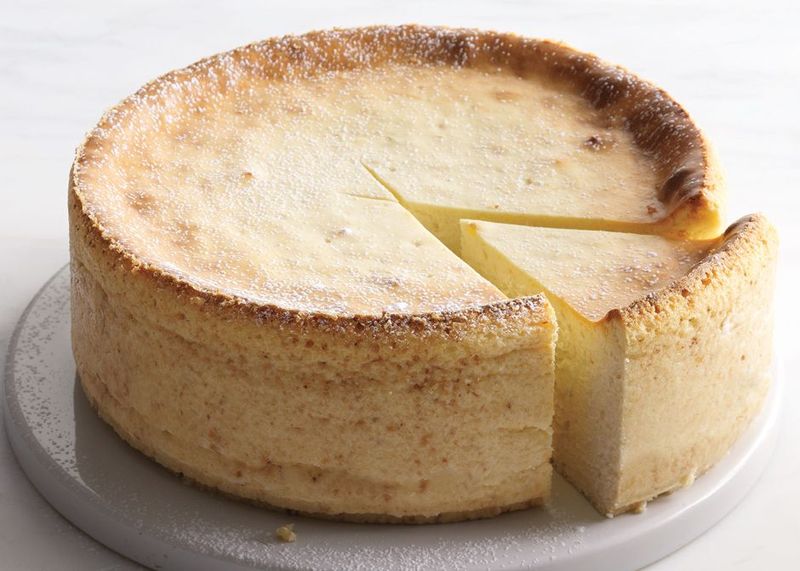
Ancient Romans created the ancestor of this Italian classic! Using ricotta instead of cream cheese gives this dolce a distinctly lighter, slightly grainy texture that feels less indulgent but equally satisfying.
Citrus zest – often lemon or orange – brightens each bite with Mediterranean sunshine. Many Italian families guard closely-held recipes that have been passed down for generations, each with special touches. Some versions incorporate toasted pine nuts or almonds for added texture.
Others feature candied fruits or a splash of amaretto. Unlike its American cousins, Italian ricotta cheesecake often skips the crust entirely, letting the cheese mixture shine as the star of the show.
4. Japanese Cheesecake
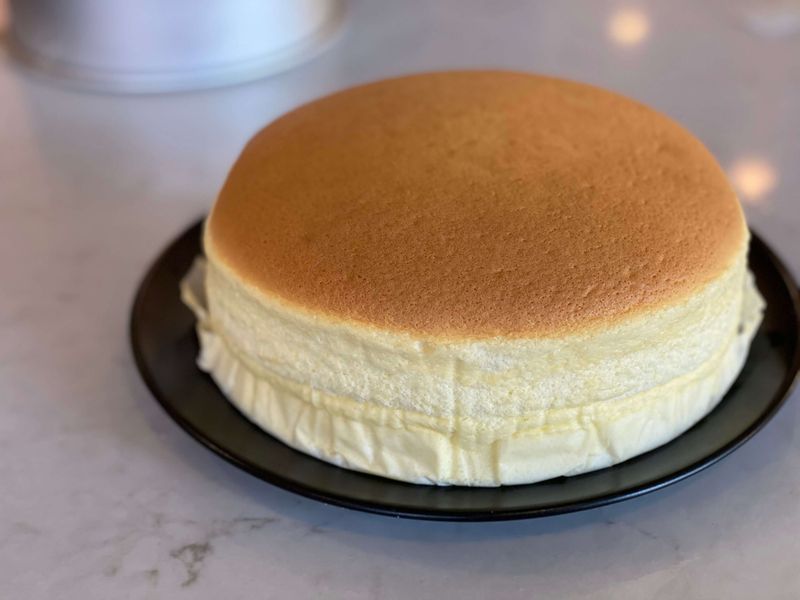
Watching this jiggly marvel bounce on a plate brings instant joy! Japanese cheesecake combines Western cheesecake with local baking techniques to create something utterly magical – a soufflé-like texture that’s both airy and moist.
Bakers achieve this cotton-soft consistency by folding whipped egg whites into the batter. The result hovers somewhere between cake and custard, with a subtle sweetness that lets the cheese flavor whisper rather than shout.
Often baked in a water bath to ensure gentle, even cooking. When done right, this cheesecake rises dramatically in the oven, then settles into perfect pillowy layers. The pale yellow color and characteristic brown top make it instantly recognizable.
5. Cottage Cheese Cheesecake
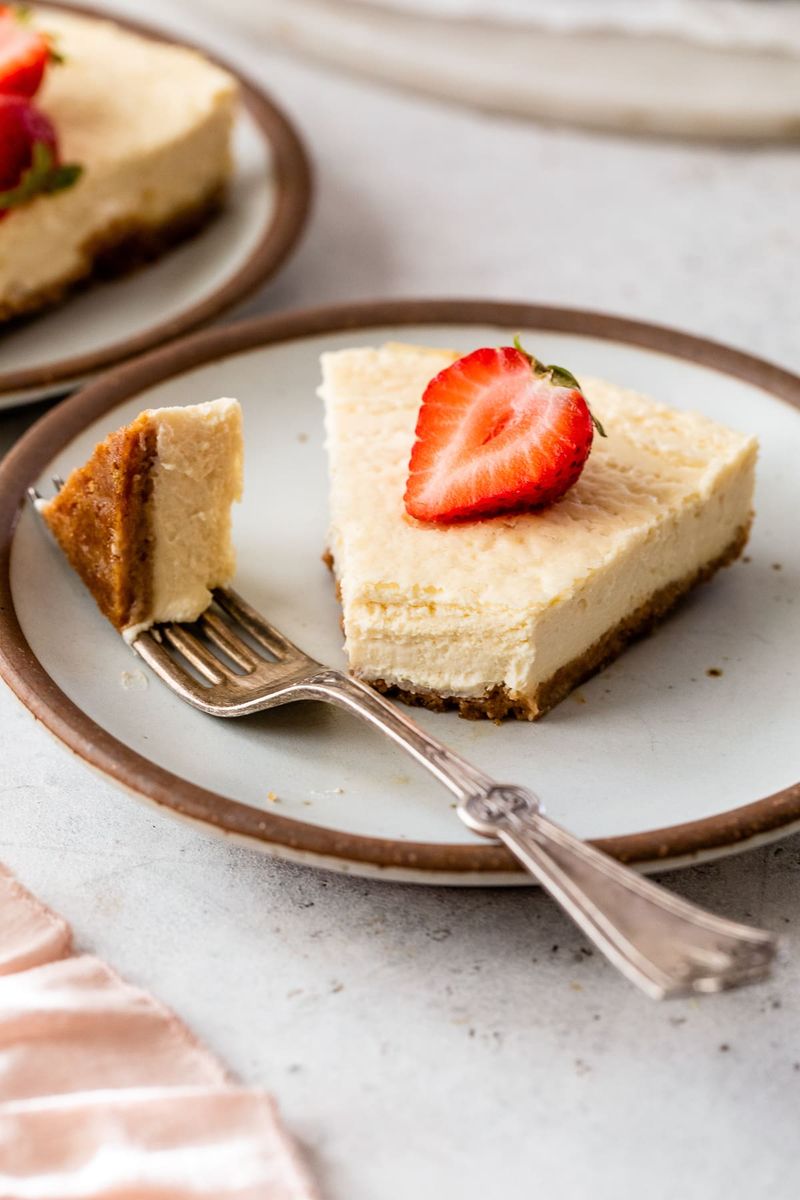
Fitness enthusiasts rejoice! This protein-packed variation delivers cheesecake satisfaction with significantly less guilt. Blended cottage cheese creates a surprisingly smooth base while boosting the nutritional profile.
The naturally lower fat content means this cheesecake feels lighter on both the palate and the waistline. Many recipes incorporate Greek yogurt for extra tanginess and protein, along with honey or maple syrup as natural sweeteners.
Perfect for breakfast or post-workout treats when paired with fresh fruit. The mild flavor makes it an excellent canvas for creative mix-ins like cinnamon, vanilla bean, or even pumpkin puree. Health-conscious bakers often use oat or almond flour crusts to keep the entire dessert on the nutritious side.
6. Chocolate Cheesecake
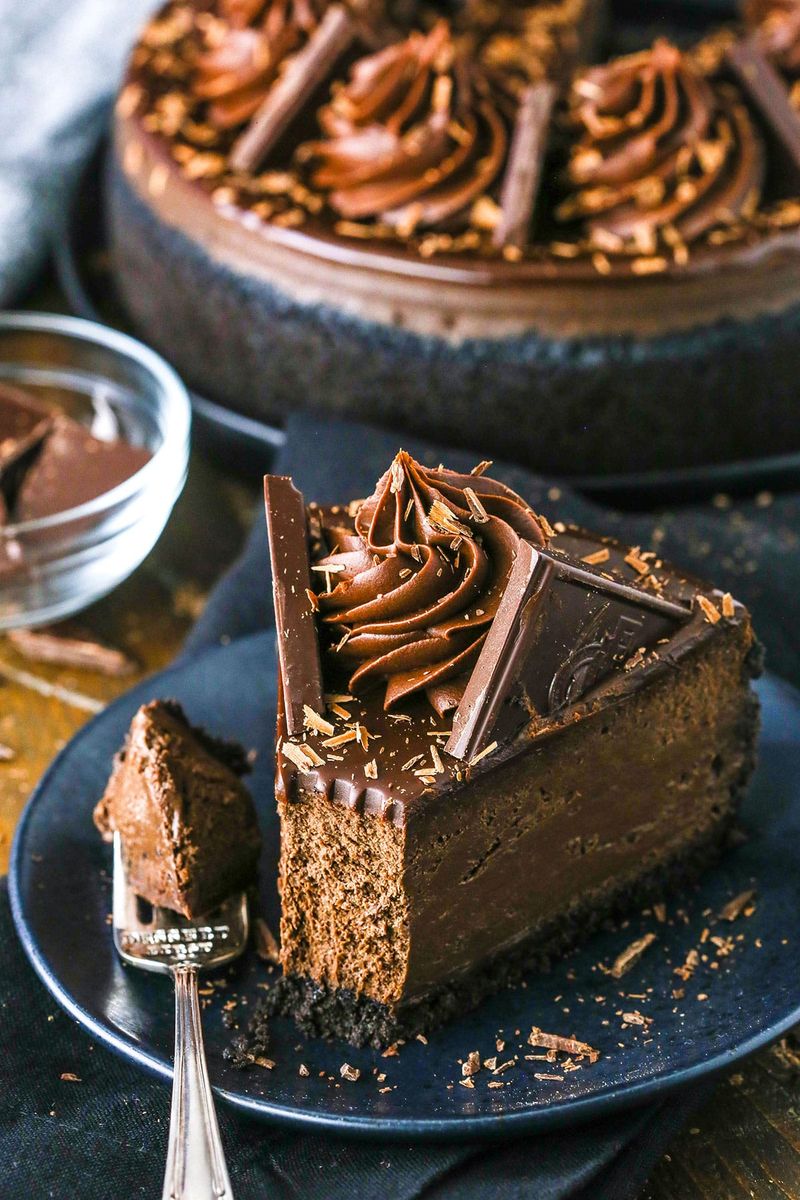
Chocolate lovers need look no further for their ultimate dessert fantasy! This indulgent creation marries two of life’s greatest pleasures – creamy cheesecake and rich chocolate – into one showstopping treat.
Cocoa powder or melted chocolate (sometimes both) transforms the traditional filling into something deeply satisfying. The color ranges from light brown to nearly black, depending on the chocolate intensity. Bakers often use chocolate cookie crusts to double down on the theme.
Ganache toppings, chocolate curls, or fresh raspberries make stunning garnishes. Some versions incorporate espresso powder to intensify the chocolate notes. For true chocoholics, chunks of chocolate folded into the batter create pockets of melty goodness throughout each slice.
7. Basque Burnt Cheesecake
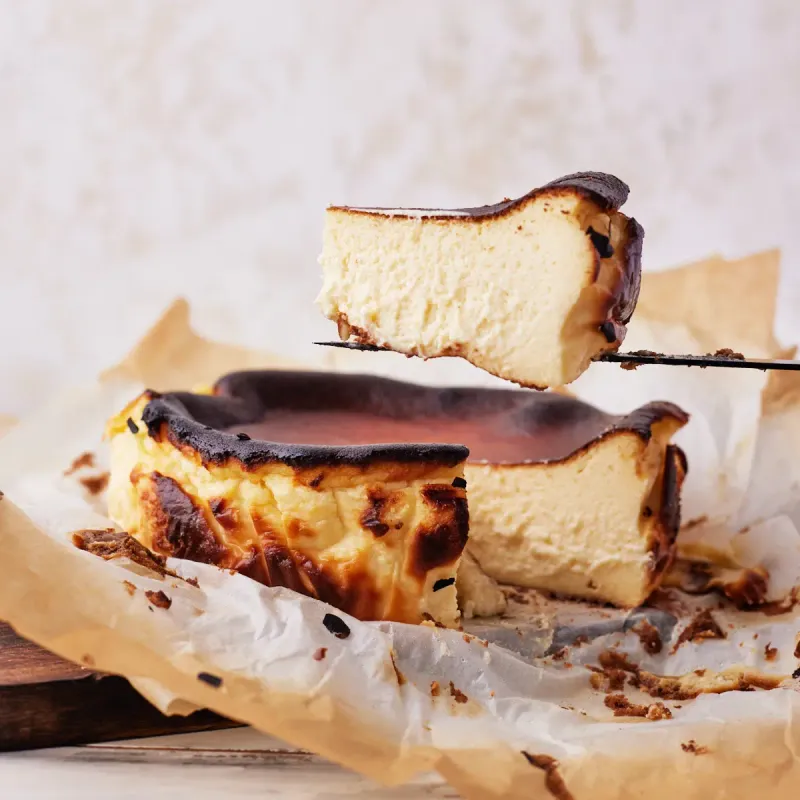
Culinary rebels will appreciate this rule-breaking Spanish sensation! Hailing from San Sebastián, this unconventional beauty intentionally flaunts its burnt top like a badge of honor. The dramatic dark exterior gives way to a creamy, almost custardy center that seems to defy physics.
Baked at high heat without a crust, the caramelization creates complex flavors that balance bitter and sweet notes perfectly. Traditionally served at room temperature to highlight its unique texture. The burnt top develops naturally during baking – no torch required!
Rustic parchment paper wrapping gives it an artisanal appearance that matches its bold character. This is definitely not your grandmother’s cheesecake, but it might become your new obsession.
8. Chicago-Style Cheesecake
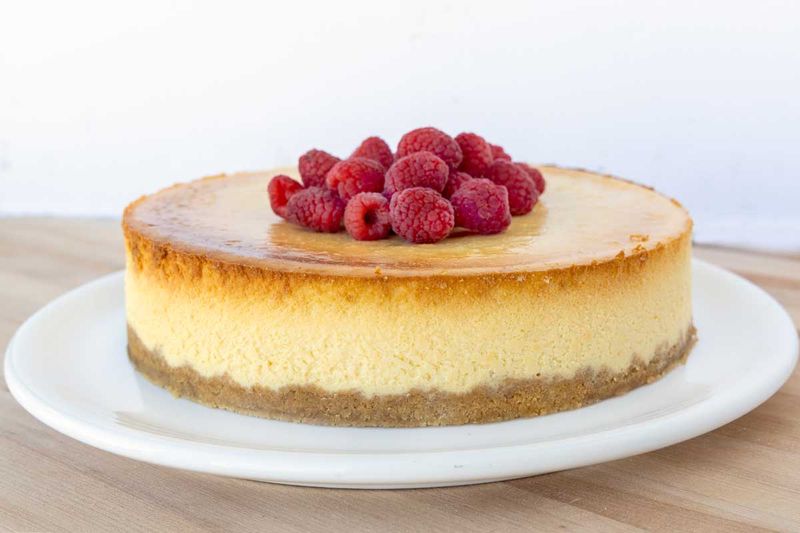
Standing tall in the Windy City’s dessert scene, this Midwestern creation boasts a firmer texture that holds its shape beautifully on the plate. The secret? A higher baking temperature that gives it a more cake-like consistency.
The signature shortbread crust provides a buttery counterpoint to the creamy filling. While less famous than its New York cousin, Chicago-style cheesecake inspires equally passionate defenders who appreciate its more structured bite.
Flavors tend toward the traditional, letting the quality ingredients speak for themselves. The slightly fluffier texture comes from extra egg whites or sour cream in the mixture. When sliced, it stands proudly without slumping, making it ideal for restaurants and bakeries.
9. Philadelphia-Style Cheesecake

Named after the cream cheese that made it famous, not the city! This lighter take on American cheesecake lets the tangy dairy flavor take center stage without heavy additives.
The texture falls somewhere between New York’s density and a lighter European style. Many bakers add a touch of lemon juice or sour cream to enhance the natural tanginess of the cream cheese. Traditionally paired with fresh fruit compotes rather than baked-in flavors.
The relatively simple ingredient list makes this version approachable for home bakers. While it doesn’t have the dramatic height of some other styles, its balanced flavor and smooth texture make it a crowd-pleaser at family gatherings.
10. Ostkaka
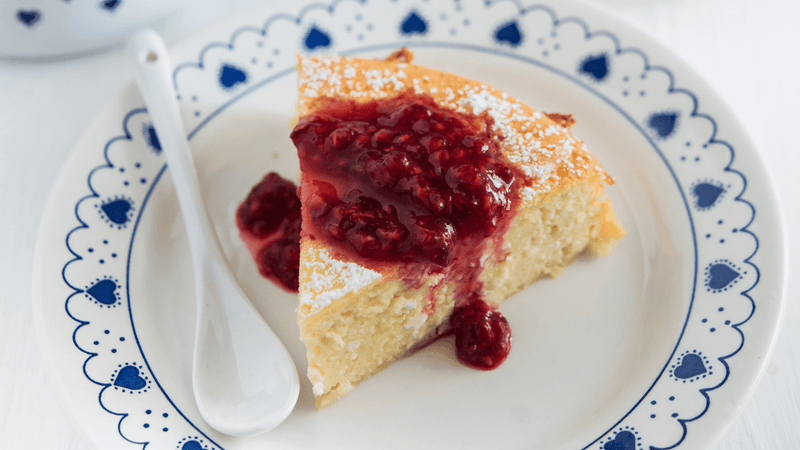
Sweden’s beloved cheese dessert dates back to medieval times! Unlike most cheesecakes, this traditional treat is served warm, creating a cozy experience perfect for chilly Nordic evenings.
Made with curdled milk and almonds, ostkaka has a distinctive texture – somewhere between pudding and cake. The name literally means “cheese cake” in Swedish, but don’t expect anything like American versions. Traditionally topped with tart lingonberry jam and a dollop of whipped cream for a beautiful contrast of flavors.
Regional variations exist throughout Sweden, with some areas adding bitter almonds for distinct flavor. The dessert even has its own holiday – Ostkakans Dag (Cheesecake Day) – celebrated on November 14th!
11. Fiadone

Corsica’s answer to cheesecake brings Mediterranean sunshine to your plate! This crustless wonder showcases the island’s beloved brocciu cheese – a fresh sheep’s milk variety with a subtle sweetness.
Bright lemon zest perfumes each bite, reflecting the citrus groves that dot the landscape. The simple mixture of cheese, eggs, sugar, and lemon creates something greater than the sum of its parts. Traditionally served at room temperature or slightly chilled.
The texture remains somewhat rustic, celebrating the natural character of the cheese rather than trying to achieve perfect smoothness. During Easter celebrations, this cheesecake becomes a centerpiece on Corsican tables, though nowadays you can find it year-round.
12. Vatrushka
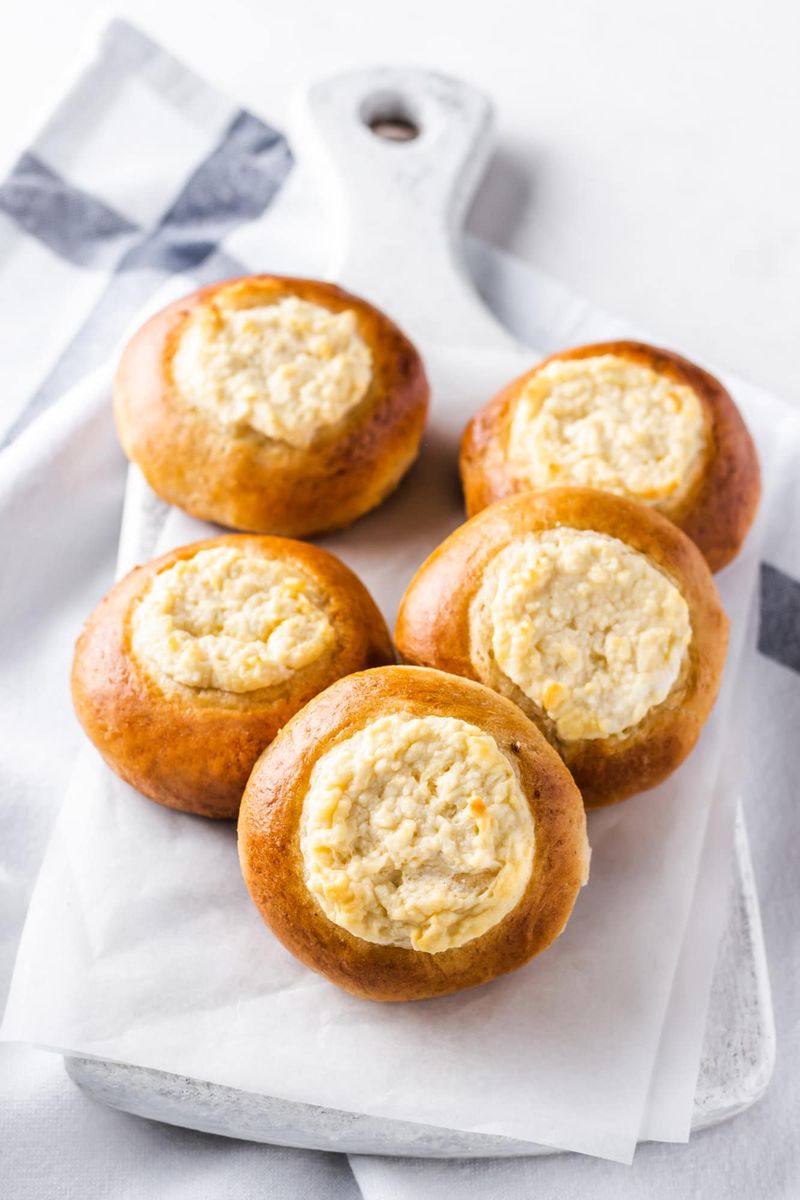
These charming mini cheesecakes from Eastern Europe bring joy in small packages! The distinctive ring of sweet yeast dough cradles a quark cheese filling, creating a perfect handheld treat.
Popular across Russia, Ukraine, and Belarus, these open-faced pastries balance bready edges with creamy centers. Some versions incorporate raisins or dried fruits into the cheese mixture for little bursts of sweetness. Traditionally enjoyed with morning tea or as an afternoon snack.
The name comes from “vatra,” meaning “fire” in Slavic languages, possibly referring to how they were originally baked in wood-fired ovens. Modern bakeries often add fruit preserves or fresh berries as colorful toppings.
13. Käsekuchen
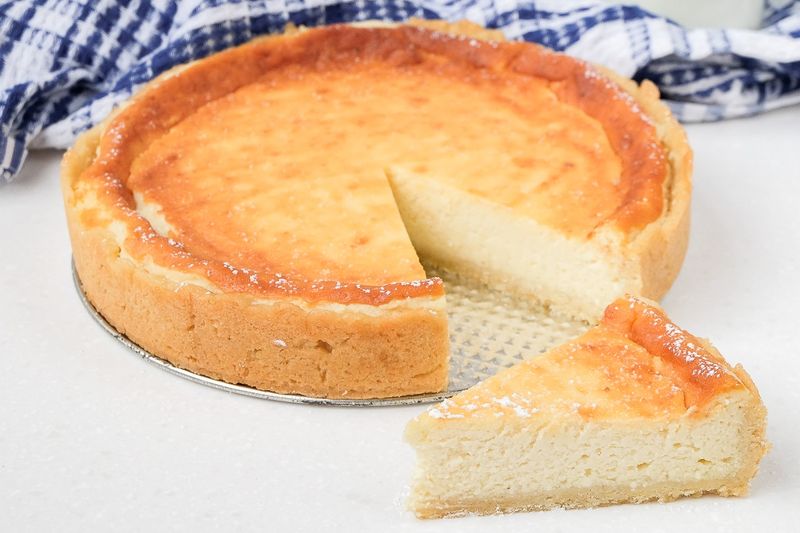
Germany’s contribution to cheesecake history relies on quark – a fresh dairy product that delivers tangy flavor with less fat than cream cheese. This creates a remarkably light texture that feels almost whipped.
The shortcrust pastry base provides structure without overwhelming the delicate filling. Many traditional recipes incorporate semolina or potato starch to achieve the perfect consistency. Family recipes often feature regional touches like raisins soaked in rum or a lattice top made from extra dough.
The relatively mild sweetness makes it appropriate for Kaffeezeit (coffee time) rather than just dessert. When baked correctly, Käsekuchen rises beautifully in the oven, then settles into a gently browned top with a custard-like interior.
14. Sernik
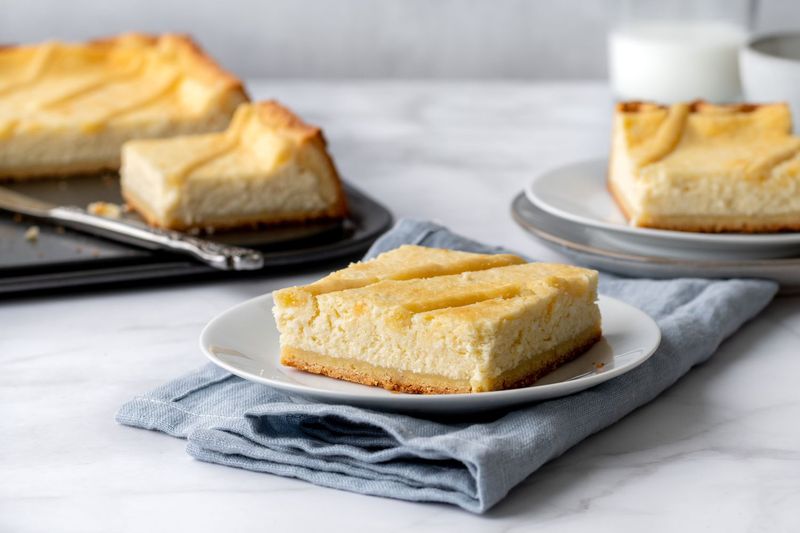
Poland’s beloved national dessert holds a special place in cultural celebrations! Made with twaróg – a fresh white cheese similar to farmer’s cheese – sernik delivers a distinct texture and subtle sweetness. Many Polish families guard closely-held recipes passed through generations.
Regional variations abound, from chocolate-marbled to apple-topped versions. The slightly grainy texture of the cheese creates something rustic and homey. Often studded with plump raisins soaked in Polish spirits for extra flavor.
During Easter and Christmas, elaborately decorated sernik takes center stage on holiday tables. The relatively dry, dense consistency allows bakers to create beautiful layers and patterns that hold their shape when sliced.
15. Sopapilla Cheesecake
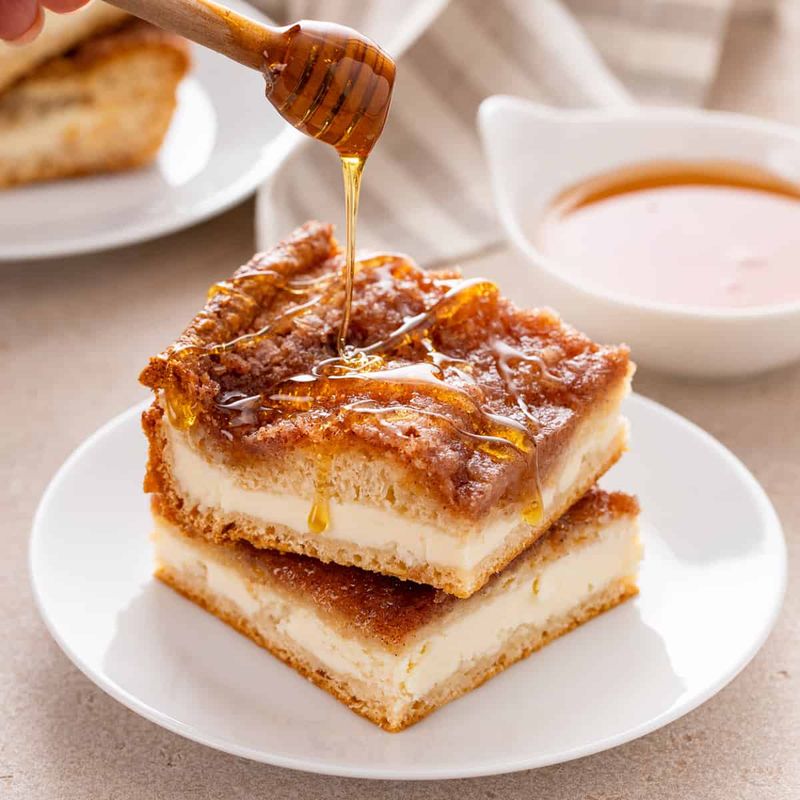
Tex-Mex flavors meet creamy dessert in this genius fusion creation! Layers of flaky crescent dough sandwich a vanilla-scented cream cheese filling, creating something between pastry and cheesecake.
The magic happens during baking, as the dough puffs up while the filling sets to perfection. The crowning glory comes from a generous dusting of cinnamon sugar that caramelizes slightly on top. Honey drizzles add the finishing touch to this Southwestern treat.
The contrast between the crisp, slightly chewy exterior and smooth filling makes each bite an adventure. Often served in squares rather than traditional wedges, this casual dessert appears at potlucks and family gatherings across Texas and the American Southwest.
16. Vegan Cheesecake
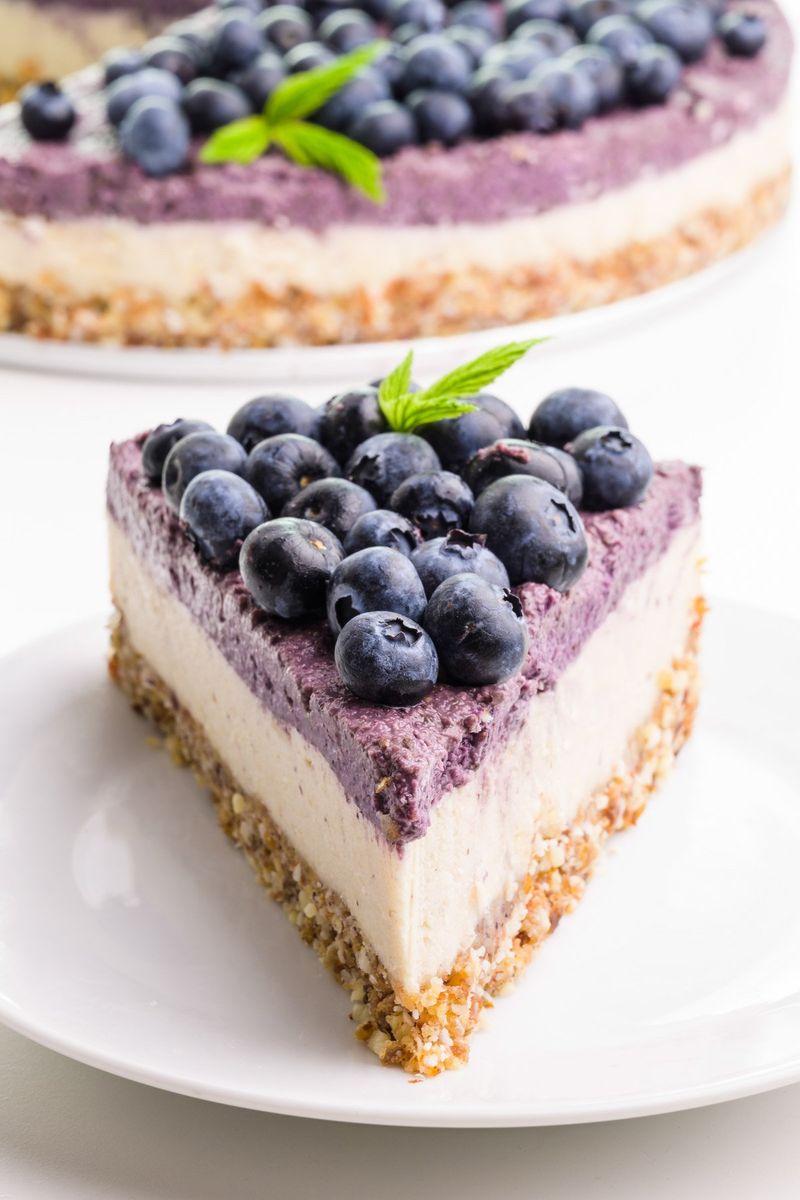
Plant-based magic transforms humble cashews into creamy dessert perfection! When soaked and blended, these nuts create a remarkably cheese-like base that will surprise even dedicated dairy lovers. Coconut oil provides the richness that would normally come from cream cheese.
Lemon juice adds the characteristic tang we expect from traditional cheesecake. Most versions skip baking entirely, relying on refrigeration or freezing to set the filling. Creative crusts made from dates and nuts add nutritional value and complementary flavor.
The natural sweetness comes from maple syrup or agave rather than refined sugar. Modern vegan bakers experiment with additions like turmeric for golden color or spirulina for vibrant blue-green variations that look stunning on social media.
17. Savory Cheesecake
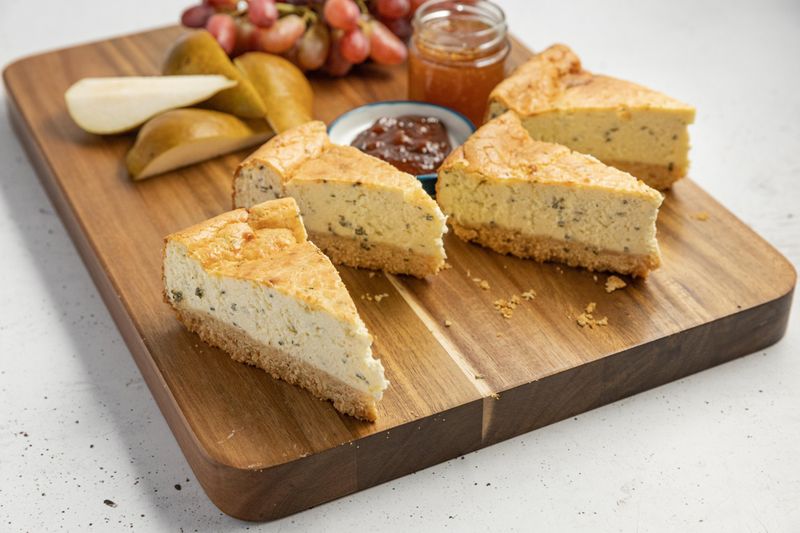
Forget dessert – this unexpected twist takes cheesecake into appetizer territory! Herbs, spices, and savory ingredients transform the familiar format into something perfect for starting a sophisticated meal.
Popular variations include sun-dried tomato and basil, smoked salmon with dill, or blue cheese with caramelized onions. The base remains similar to traditional cheesecake but with reduced sugar and added seasonings. Typically served with crackers or crostini rather than forks.
These showstoppers make dramatic centerpieces for cocktail parties and holiday gatherings. The familiar texture in an unexpected flavor profile creates a delightful surprise for guests. Some chefs add gelatin for a firmer texture that holds up well when sliced thin.
Leave a comment